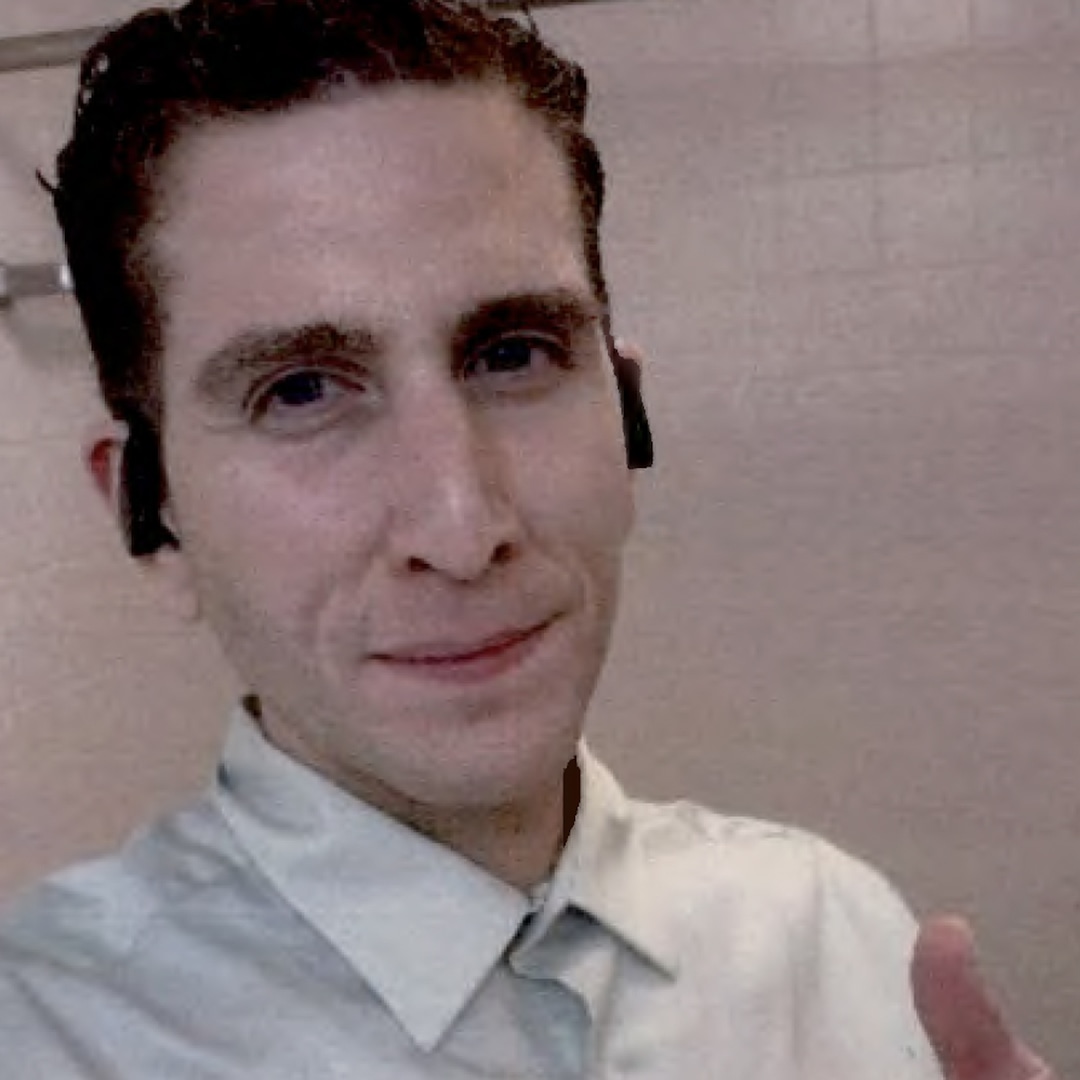Bryan Kohberger’s legal team is preparing for his trial.
During an April 9 court hearing, Kohberger’s defense addressed elements that could influence a jury when his trial for the murders of students Madison Mogen, Kaylee Goncalves, Xana Kernodle and Ethan Chapin—to which he has plead not guilty—begins in August.
During the hearing, presiding judge Steven Hippler, according to NBC News, agreed words such as “sociopath” and “psychopath” shouldn’t be used to describe Kohberger in court, but that “murderer” would be permissible.
As part of ongoing efforts to have the death penalty removed as a possible punishment, Kohberger’s team also addressed his recent autism spectrum disorder (ASD) diagnosis, of which they’ve previously argued could influence jurors due to Kohberger’s “flat affect” and the fact he “does not show emotion on his face.”
During the hearing, the 30-year-old’s defense spoke further about the possible implications of his diagnosis and the possibility of the death penalty if he is found guilty.
“Due to his ASD, Mr. Kohberger simply cannot comport himself in a manner that aligns with societal expectations of normalcy,” his legal team argued, per NBC News. “This creates an unconscionable risk that he will be executed because of his disability rather than his culpability.”
While no decision about the death penalty was made during the hearing, prosecutors did agree not to bring up Kohberger’s autism, according to NBC News, as an “aggravator” to help an argument for capital punishment.
Prosecutors previously addressed Kohberger’s autism diagnosis in a filing, per NBC News, during which they argued his diagnosis is with the least severe form of autism, which comes “without accompanying intellectual or language impairment” and that he has failed to show his diagnosis “would in any way make him less culpable for murder.”
Meanwhile, Kohberger’s defense team previously claimed his diagnosis could explain why he was allegedly wearing gloves and cleaning on the night of his arrest in December 2022.
“The State asserts that this demonstrates that he had consciousness of guilt and was trying either to hide his DNA or engage in the cleaning of his car,” Kohberger’s attorney wrote in docs obtained by NBC News and viewed by E! News in March. “This is highly prejudicial and misleading. Mr. Kohberger frequently wears gloves to avoid germs on surfaces.”
His defense lawyer further argued that rather than cleaning his car the night he was arrested, as prosecutors claim, the criminology student was “awake at night, as is typical for him, and he was cleaning his bathroom.”
Read on for more on the harrowing case before Kohberger’s trial begins.
(NBC News and E! News are both part of the NBCUniversal family.)
Who Were Kaylee Goncalves, Madison Mogen, Ethan Chapin and Xana Kernodle?
Kaylee Goncalves, 21, Madison Mogen, 21, Xana Kernodle, 20, and her boyfriend Ethan Chapin, 20, were University of Idaho students who lived in an off-campus apartment.
On Nov. 12, 2022—the night before their bodies were found—Goncalves and Mogen were at a nearby sports bar, while Kernodle and Chapin were at the latter’s fraternity party. By 2 a.m. on Nov. 13, the four roommates and Chapin were back at the three-story rental house.
Goncalves was a senior majoring in general studies at the College of Letters, Arts and Social Sciences. She was expected to graduate in December before heading to Austin, Texas, for a job at a marketing firm, her friend Jordyn Quesnell told The New York Times.
Mogen, who was studying marketing, was best friends with Goncalves since the sixth grade. She had plans to move to Boise after graduation, family friend Jessie Frost shared with The Idaho Statesman.
Kernodle was a junior majoring in marketing, the University said at the time. She and Chapin—who majored in recreation, sport and tourism management—had been dating since the spring, the roommates’ neighbor Ellie McKnight told NBC News.
Were There Any Survivors?
Two roommates, Dylan Mortensen and Bethany Funke, had been home at the time of the murders. In text messages that were unsealed March 6, 2025, Mortensen and Funke tried contacting their roommates on Nov. 13 after the former saw a masked man moving through the house, according to documents obtained by E! News.
“No one is answering,” Mortensen texted Funke at 4:22 a.m. “I’m rlly confused rn.”
She continued to reach out to their roommates, urging them to respond. “Pls answer,” she texted Goncalves at 4:32 a.m. and again at 10:23 a.m. “R u up??”
At 11:58 a.m., a 911 call was placed after Kernodle was found unresponsive, per an additional motion obtained by E! News. A woman named A1 in the transcript described the current situation to the operator.
“One of the roommates who’s passed out and she was drunk last night and she’s not waking up,” she said on the phone. “They saw some man in their house last night.”
Who Is Bryan Kohberger and How Was He Found?
BryanKohberger, who was charged with four counts of first-degree murder and one count of burglary, was a doctoral candidate at Washington State University. Over one month after the bodies of Gonclaves, Mogen, Kernodle and Chapin were discovered, Kohberger was taken into custody Dec. 30 in Monroe County, Penn. He was extradited to Idaho Jan. 4, 2023.
As for how authorities connected him to the killings? DNA was found on a knife sheath that was left at the crime scene, prosecutors revealed in June 2023 court documents, per NBC News.
When the DNA didn’t match anyone in the FBI database, authorities ran the DNA through public ancestry websites to create a list of potential suspects, according to the filings. After learning that Kohberger had driven to his parents’ home in Monroe County, local officials then went through their trash and found DNA that tied him to that found on the sheath.
What Was Kohberger’s Initial Defense?
At the moment, a motive for the attack has not been detailed and a gag order prevents many involved in the case from speaking publicly, NBC News reported. However, the unsealed documents provided some insight into their initial arguments.
Kohberger’s attorneys argued in a motion obtained by E! News to strike the death penalty that Kohberger—who initially faced death penalty if found guilty on all counts—has autism spectrum disorder (ASD) and that executing him would violate the Eighth Amendment’s prohibition on “cruel and unusual punishment.”
His defense argued that Kohbereger “displays extremely rigid thinking, perseverates on specific topics, processes information on a piecemeal basis, struggles to plan ahead, and demonstrates little insight into his own behaviors and emotions.”
“Due to his ASD, Mr. Kohberger simply cannot comport himself in a manner that aligns with societal expectations of normalcy,” the motion said. “This creates an unconscionable risk that he will be executed because of his disability rather than his culpability.”
Where Was the Trial Set?
Initially, Kohberger had a judge enter a not-guilty plea to the first-degree murder charges on his behalf after remaining silent at his May 2023 arraignment. Although his trial was set to begin Oct. 2, 2023, Kohberger waived his right to a speedy trial in August 2023.
His trial date—which was scheduled to take place in Ada County, more than 300 miles from Latah County, where the killings took place—was set to begin Aug. 11, 2025.
Latah County Judge John Judge previously ruled in favor of the transfer request made by Kohberger’s defense in September 2024 based on “presumed prejudice” if the trial remained in Latah County.
Ada County Judge Steven Hippler denied the defense’s request to suppress key DNA and other evidence, including cell phone and email records, surveillance footage, past Amazon purchases and DNA evidence in the trial.
What Was the Verdict in the Trial?
Kohberger’s murder trial was abruptly canceled after he took a plea deal from prosecutors on June 30, 2025. In accepting the deal, Kohberger agreed to plead guilty to four counts of murder and one count of burglary, as well as waive his rights to appeal and ask for a more lenient prison sentence.
He entered his guilty plea on July 2, 2025, confirming with a “yes” after the judge asked if he killed all four victims “willingly, unlawfully, deliberately and with premeditation and malice with forethought.”
Did Kohberger Take a Selfie After the Murders?
A selfie Kohberger took the morning after the murders took place was introduced in March 2025. The photograph, which sees him in front of a shower showing a thumbs up, displays how he may fit the description a witness identified as “D.M.” gave in filings, who said the perpetrator had “bushy eyebrows.”
Steve Gonclaves, the father of victim Kaylee, later reacted to the image calling it a “trophy” in an interview with Fox and Friends.
“I know the timeline, I know that he had just returned to the crime scene and he had come back,” Gonclaves said. “He had realized that nobody had called 911.”
As he put it, “To him, that’s his little trophy to let him know like, ‘Hey, I got away with it, nobody’s on me.’”
What Did Kohberger Google Before the Murders?
In a 2025 Dateline documentary about the murders, a former classmate of Kohberger’s detailed a “peculiar” text she received from him after making his acquaintance at a party.
“I definitely felt a little obligated to chat with him, because to me, he seemed a little awkward,” the student—identified as Holly—explained. “Kind of like you might expect for a PhD student who didn’t know anyone at the party and was maybe trying his best to kind of get out there and be social and make friends.”
The following day, Holly said she received a text from him, which she described as overly formal.
“Hey, I am pretty sure we spoke about hiking trips yesterday,” Bryan’s text from July 10, 2022 at 1:19 p.m., read, per Dateline. “I really enjoy that activity, so please let me know. Thanks!”
Elsewhere in the Dateline documentary, Kohberger’s browsing history was found to have included searches for Ted Bundy, Britney Spears’ song “Criminal,” and the term “University of Idaho Murders.”
Did Kohberger Confess to Killing Kaylee Goncalves, Madison Mogen, Ethan Chapin and Xana Kernodle?
After accepting a plea deal that would spare him from the death penalty, Kohberger changed his plea to guilty in the murders of Goncalves, Mogen, Kernodle and Chapin, as well as one count of burglary, at a July 2, 2025 hearing in Idaho.
When judge Hippler questioned Kohberger if he killed each victim “willingly, unlawfully, deliberately and with premeditation and malice with forethought,” he replied with a firm, “Yes” for each.
In taking the plea deal, Kohberger has waived his right to appeal or ask for a more lenient prison sentence, according to Hippler.
How Long Is Kohberger’s Prison Sentence?
Though the families of Goncalves and Kernodle each slammed the decision to issue a plea deal, therby taking the death penalty off the table, Kohberger was officially sentenced to life in prison July 23, 2025.
Judge Hippler sentenced Kohberger to four life terms—to be served consecutively—without the possibility of parole for each count of first-degree murder, along with a $50,000 fine for each count and a $5,000 civil penalty to be paid to each of the victims’ families. He also gave Kohberger 10 years and imposed a fine of $50,000 on the burglary count.





